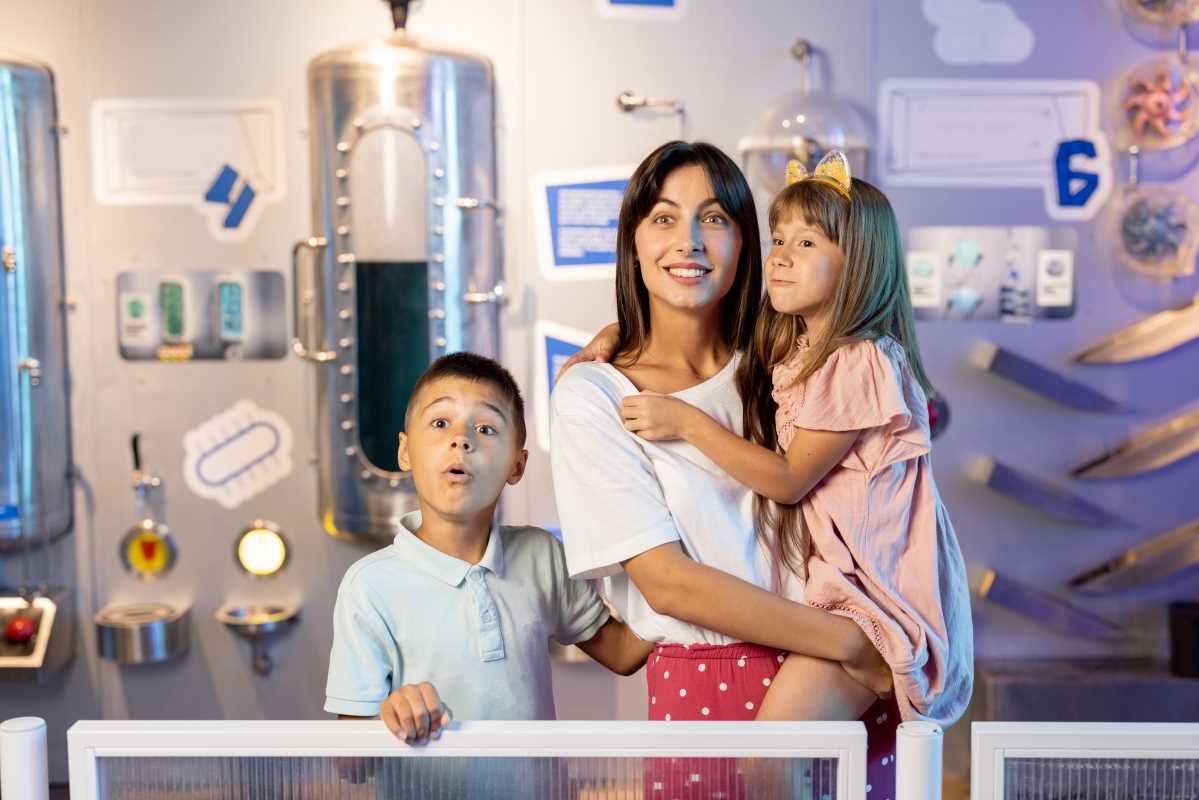Curiosity comes alive when hands-on experiments transform abstract ideas into engaging activities that invite everyone to join in. Families find that participating together creates lasting memories filled with laughter and surprise, far surpassing the experience of simply watching. Children and adults alike build stronger connections as they explore tactile displays and try interactive demonstrations, sparking new questions and encouraging lively conversations. These shared adventures help everyone learn in a way that feels both natural and exciting. Discover nine standout destinations where creativity, discovery, and fun come together for unforgettable experiences that bring people closer and inspire a passion for learning.
Places Where Interactive Science Sparks Curiosity
Imagine galleries designed like giant puzzles, each station inviting visitors to tinker, test, and marvel. These hubs of discovery combine artful design with scientific principles, encouraging all ages to leap into action. By promoting touch and trial—and even playful failure—they ignite that irresistible urge to ask “what if?”
Science museums thrive on this dynamic energy. Each site transforms learning into a participatory adventure, where families collaborate on challenges from balancing beams of light to constructing miniature ecosystems. Snack breaks fuel fresh ideas, and souvenir stations capture newfound passions.
9 Family Favorites for Hands-On Discovery
- Exploratorium – San Francisco, CA
- Highlights: 600+ exhibits blending art and science; fog-shaping, prisms, circuit building
- Cost: ~$30 adults, $20 children
- Insider tip: Visit late afternoon before sunset—crowds thin, and tide-pool touch tanks feel calmer
- The Tech Interactive – San Jose, CA
- Highlights: Robotics, coding, biotech experiments, light curtain responding to motion
- Cost: ~$25 per person
- Insider tip: Weekday mornings are quieter; look for expert-led hackathons kids can join
- Pacific Science Center – Seattle, WA
- Highlights: Tropical butterfly house, laser demos, 3D planetarium
- Cost: ~$23 adults, $17 youth
- Insider tip: Arrive before opening to grab planetarium tickets, which sell out quickly on weekends
- Ontario Science Centre – Toronto, Canada
- Highlights: 500+ displays covering space, Earth sciences, and biology; hands-on water lab
- Cost: ~CAD 25 adults, CAD 18 children
- Insider tip: Find the hidden slide near the astronomy zone—ask staff for directions
- COSI – Columbus, OH
- Highlights: Earthquake platform, high-tech ocean exhibit, virtual Mars rover
- Cost: From $29.50; discounted entry after 3 p.m.
- Insider tip: Early spring mornings bring special interactive science theatre shows with surprise guest scientists
- Science North – Sudbury, Canada
- Highlights: Geology labs with meteorites, crystal-carving, living ice rink exhibit
- Cost: ~CAD 22 adults, CAD 15 youth
- Insider tip: Weekend mornings feature geologist-led sessions for mineral identification under microscopes
- Discovery Place Science – Charlotte, NC
- Highlights: Outdoor physics park, indoor rainforest, VR dome
- Cost: ~$24 adults, $20 children
- Insider tip: Bring refillable water bottles; join conservation workshops happening throughout the day
- Science Museum of Virginia – Richmond, VA
- Highlights: Owl pellet dissection, water rocket launches, functional printing press
- Cost: ~$16 all ages
- Insider tip: Arrive at opening to get first access to dinosaur bone touch tables
- Sciencenter – Ithaca, NY
- Highlights: Exhibits on renewable energy, microgravity, ecology; submersible hatch simulation
- Cost: ~$14 per person
- Insider tip: Ask politely at the entrance about “science snack” demos—staff may invite you to taste edible polymers
Beyond Exhibits: Special Programs That Inspire
Many science museums offer more than permanent galleries—they run rotating programs and seasonal events designed to keep families coming back. Evening “science nights” transform spaces into after-hours adventures with music, themed workshops, and stargazing sessions. Summer camps often give kids the chance to dive into focused topics like robotics, astronomy, or environmental science, creating week-long journeys of discovery. Weekend maker labs encourage visitors of all ages to tinker with 3D printers, soldering irons, and craft supplies, bridging art with engineering in surprising ways. Traveling exhibitions add yet another layer of excitement, showcasing everything from dinosaur fossils to space exploration gear on loan from major institutions. These programs not only enrich the visitor experience but also build ongoing engagement, encouraging children to see science as part of daily life rather than a one-time outing. Families who schedule trips around these special events often find the experience feels fresh and uniquely memorable, even if they’ve visited the same museum before. Checking museum calendars in advance and signing up for newsletters ensures you don’t miss limited-time opportunities that can turn an ordinary visit into an extraordinary adventure.
Tips for Creating a Memorable Museum Day
Plan your route to balance busy exhibits with quiet areas, and use maps to find rest stops and snack stations. Download apps for scavenger hunts, book timed entries to skip lines, and check schedules for special demos. With a mix of planning and flexibility, science outings turn into lasting memories of curiosity and shared discovery.
 (Image via
(Image via





